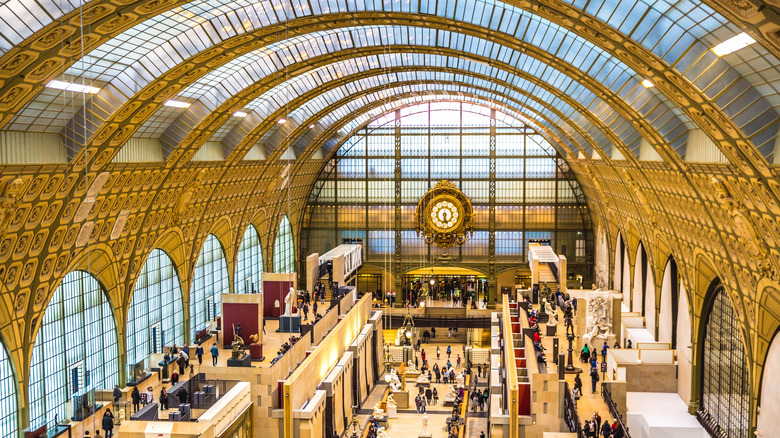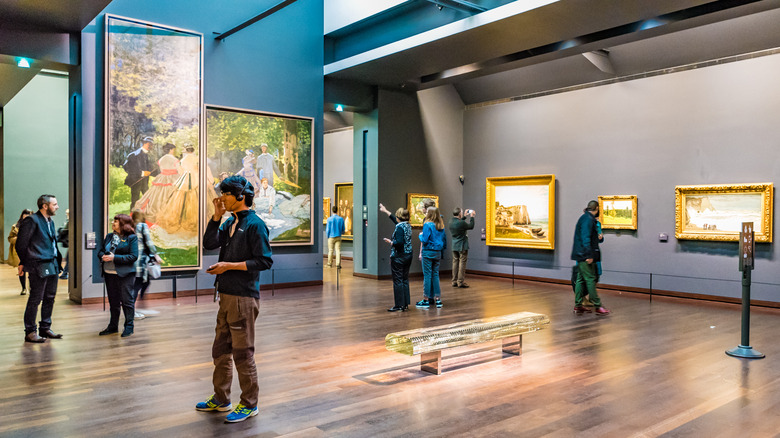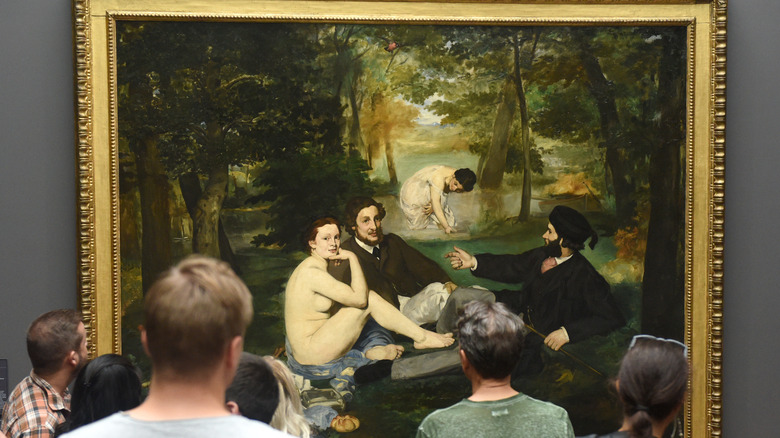Here's The Museum You Should Visit If You Want To See The Luncheon On The Grass
Maybe you can readily cite the differences between Monet and Manet, or spot the details that mark the transition from Impressionism into Post-Impressionism. Maybe you just like to look at beautiful paintings. Whatever the case, art museums can be a great way to occupy an afternoon — or an entire day if you have the stamina and a comfortable pair of shoes. Paris, France alone is home to well over 30 art museums containing everything from military memorabilia to Picasso (via Museum Hack), providing art lovers with a wealth of options.
Most are familiar with the Louvre, the world's most popular fine arts museum according to the BBC, but the amount of art accessible to visitors goes well beyond the walls of this particular landmark. And, if you're hoping to save time during your travels and avoid the crowds that constantly surround the "Mona Lisa" — which The New York Times has called "not even a satisfying bucket-list item" — it may be best to check out a different location. Édouard Manet's 1863 work "The Luncheon on the Grass" known as "Le Déjeuner sur l'herbe" in its original French, via Britannica, is an admirable goal, less than a 15-minute walk from the "Mona Lisa" in the Musée d'Orsay.
Plan a trip to Paris' Musée d'Orsay
Paris' Musée d'Orsay, originally built in 1900 to function as a train station and hotel, was transformed into a national museum for Impressionist and Post-Impressionist art in the early 1980s after railway technology advanced and the station became obsolete (via Britannica). Now, over a century since it was first constructed, visitors to the museum can still see accents from the original Gare d'Orsay, enjoying famous works of art in the grand atrium once home to busy train platforms. Manet's "The Luncheon on the Grass" is located among other Impressionist-era art and artists including Renoir, Monet, and Cézanne (via Musée d'Orsay). On your way to visit Manet, get a look at those famous Monet water lilies or Gauguin's "The White Horse" in the upper galleries (via Paris Discovery Guide). The museum also houses an impressive Van Gogh collection.
As well as paintings, the Musée d'Orsay features a wide variety of sculptures — perhaps the tallest being a (considerably shortened) replica of the Statue of Liberty welcoming visitors as they enter the atrium. However, though this museum may not have been referenced in Netflix's "Emily in Paris" like the often-overcrowded Louvre, it does welcome an average of more than three million visitors annually (via Statista).
The Luncheon on the Grass changed art forever
Édouard Manet's now-beloved 1863 work "Le Déjeuner sur l'herbe" — or "The Luncheon on the Grass" — was initially rejected by the Paris Salon (via Britannica). Instead, it was featured at The Salon of the Refused — Salon des Refusés — where it was in good company. The 1863 exhibition hosted other rejected artists like Paul Cézanne and Camille Pissarro, per Oxford Reference. Manet's painting, which depicts a naked woman picnicking in the company of two clothed, bourgeois men, was mercilessly belittled by critics, many of whom were scandalized by the presence of an undressed woman in a seemingly modern-day setting (via Britannica). Celebrated paintings of the time, according to The Met, largely featured historical and classical references. Nudity was only acceptable if used for allegorical purposes. Manet's bold brush strokes and blocks of color, too, were heavily criticized, contrasting with the precise blending of the time (via National Gallery of Art).
However, the scandal created by "The Luncheon on the Grass" started an artistic revolution and ushered in a new era of painting: Impressionism (via Britannica). Manet became a figurehead of the movement, inspiring younger artists to reject the limitations imposed by the Paris Salon. According to Manet himself, via Getty Museum Collection, "There is only one authentic thing: to paint what you see." Now, along with other paintings synonymous with the movement, you can see the image that began it all at Paris' Musée d'Orsay.


